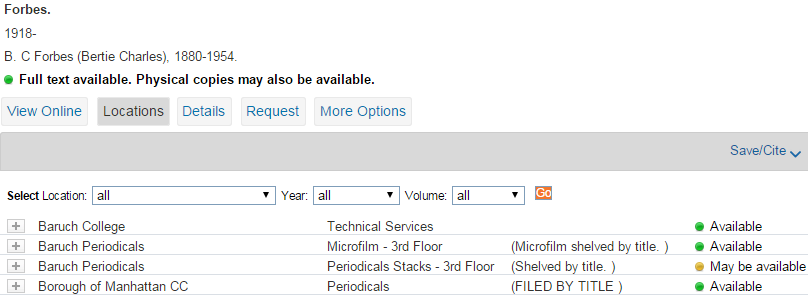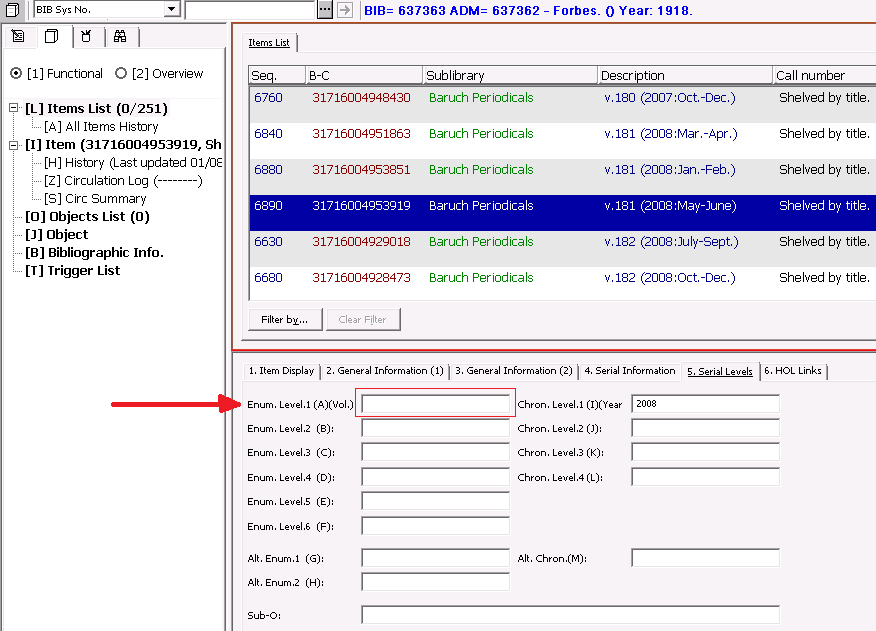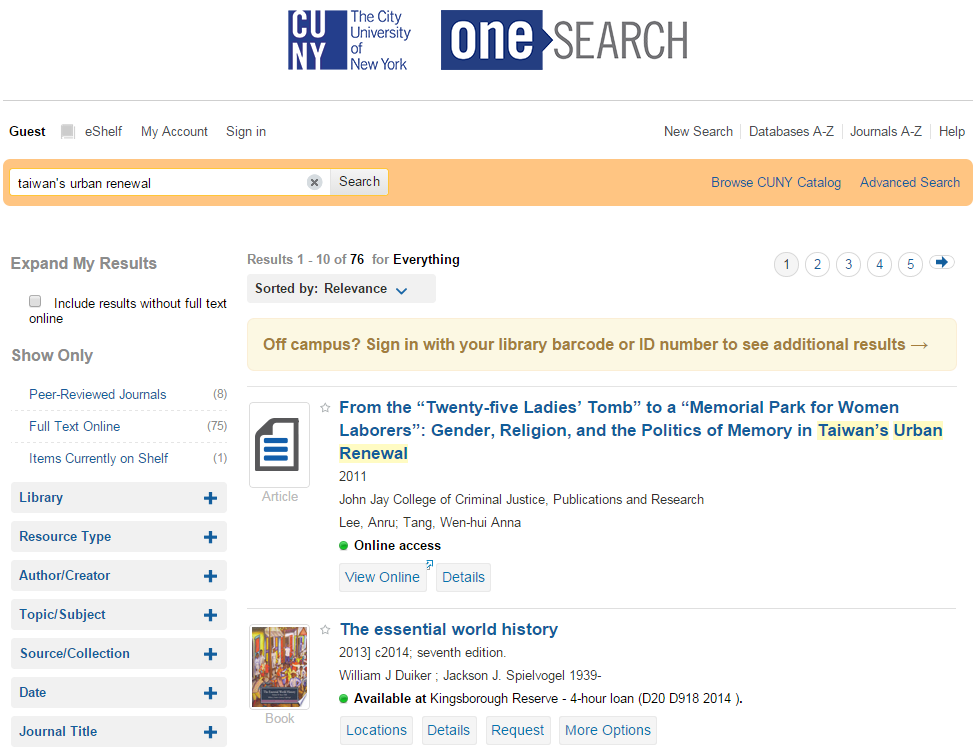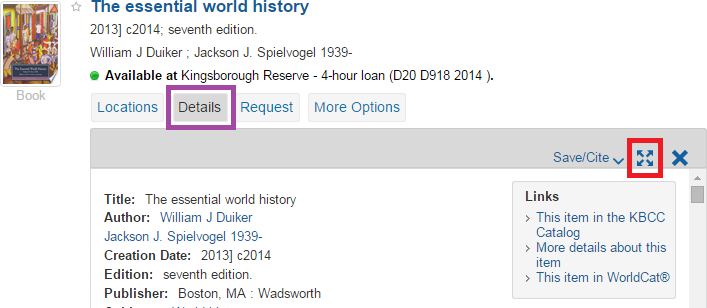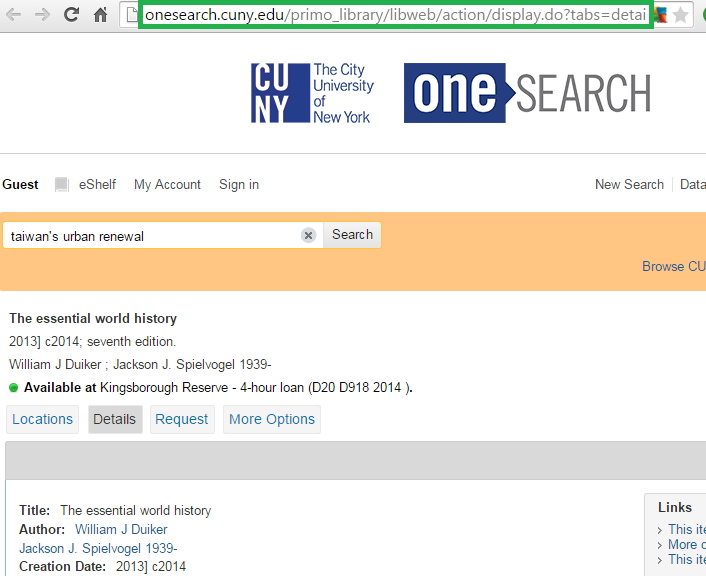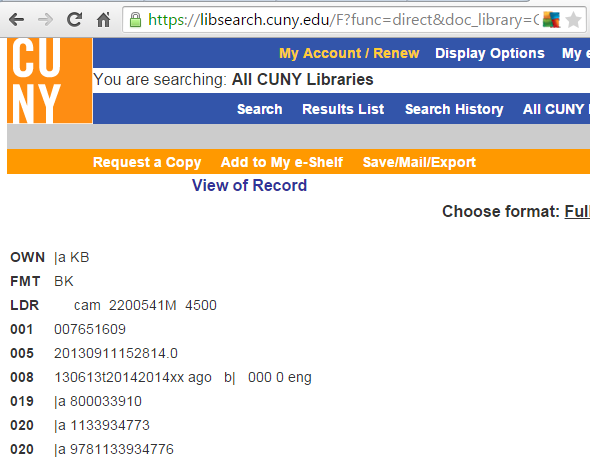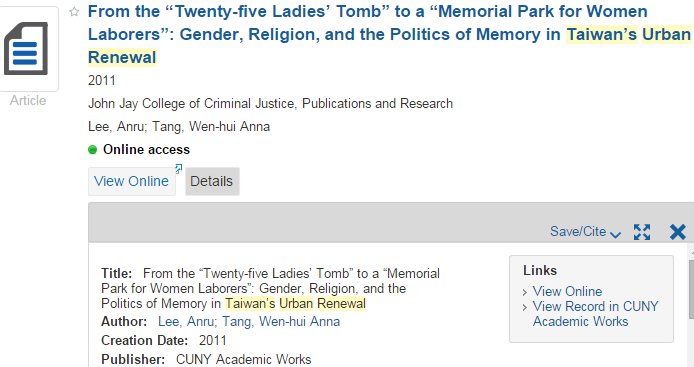Home » Articles posted by Joan Kolarik (Page 3)
Author Archives: Joan Kolarik
Why Does OneSearch Say We Have the Electronic Book?
We’re finding that the Merck Manual is in our results as an e-resource but we only have it in print. Why does this happen?
OneSearch interprets cataloging quite literally.
In this case, the MARC record contains this 856 field (full record):
85641 $uhttp://www.merck.com/pubs/mmanual%5Fhome2/
The second indicator has a mission-critical role (MARC 856 field @ LOC)
- # – No information provided
- 0 – Resource
- 1 – Version of resource
- 2 – Related resource
- 8 – No display constant generated
OneSearch interprets all 2nd indicator values EXCEPT 2 as a version of the e-resource. Since, in the case above, the 2nd indicator = 1, OneSearch reports that the e-resource is available.
If a link is NOT to an actual e-resource, but links to related content, the 2nd indicator should be a 2.
There is one exception. Sometimes tables of contents and other materials are classified with 2nd indicator = 1, that is, a version of the resource. In that case, in order to avoid OneSearch reporting that the e-resource is owned, both of the following must be true:
- at least one of these note subfields must appear: $3, $y, or $z
- one of these note subfields must contain one of the following texts:
- Table of contents (or Inhaltsverzeichnis or Table des matières or Indholdsfortegnelse)
- Sample text
- Publisher description (or Klappentext)
- Book review
- Contributor biographical information
The most common cataloging for these at CUNY
- 85641$3 for “Table of contents” and “Sample text” notes
- 85642$3 for “Publisher description” and “Book review” notes
Before reporting this type of issue to OLS, please check the record metadata with your cataloger.
If the reason for the problem is not obvious from the cataloging and a work order is opened, please copy the 856 field into the work order.
This post was originally published on 29 April 2015. We updated it on 18 August 2015 to reflect the latest information regarding the texts which do not indicate an e-book (for example, klappentext).
New in OneSearch: Enriched Browse
 OneSearch’s Browse now has a new feature: “See” references!
OneSearch’s Browse now has a new feature: “See” references!
When browsing by either Author or Subject, the results now link to the preferred term from the non-preferred term.
For example,
- when browsing the author “shakespeare, g,” OneSearch shows that “Shakespeare, William, 1564-1616” is the preferred form to “Guglielmo” and provides a link to that preferred author:
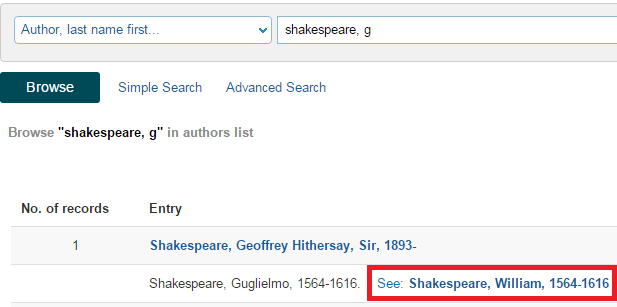
- when browsing the subject “cheese cake,” OneSearch shows that “Cheesecake” is the preferred form:
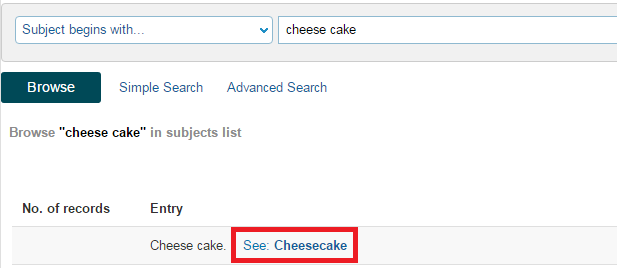
Note that multiple authority sources are currently present in our search results. In OneSearch, the source of an authority often appears in the right column of browse results. The wealth of resources can lead to duplication of subject terms (example below):
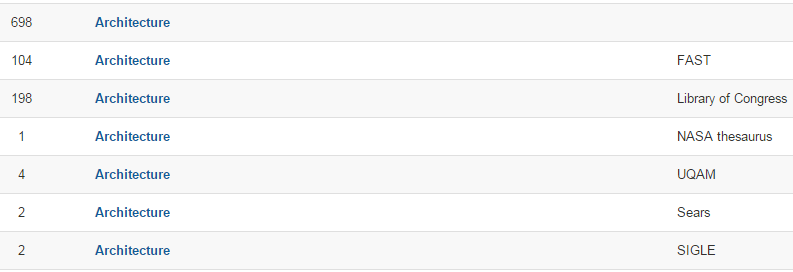
This is not new behavior. We have made some improvements and are continuing to work on this issue. In the near future, we plan to remove all subject authority sources except:
0 – Library of Congress Subject Headings
1 – LC subject headings for children’s literature
2 – Medical Subject Heading
New in OneSearch: Journal Issue Filtering
Problem
Years of journal issues can be impossible to wade through when trying to locate specific issues.
Solution
Filters on Location, Year, and Volume.
This tool was already available in the CUNY Catalog and has now been added to OneSearch, too.
Now, when there are sufficient issues to make filtering useful, filters will be offered above the issue list, as seen below (to view issues, open the “Locations” tab):
Source
This filtering, both in the OPAC and in OneSearch, is based on three Aleph item fields:
- sub-library
- volume, aka Enum.Level.1(A)(Vol.) or
enumeration-a - year, aka Chron.Level.1(I)(Year) or
chronological-i
Missing Filters?
There are two situations in which filtering may appear incomplete.
- missing volumes and/or years
- missing filter selection boxes
1. Missing Volumes and/or Years
If you select volume 181 in the example above, it appears that Baruch does not own the issues. However, if you select the year 2008, the result clearly shows that Baruch does own volume 181 and the issues are listed.
This problem is caused by an empty Enumeration Level 1 (Volume) field in Aleph:
This is an example of how enhanced software and search capabilities make consistent cataloging more important than ever.
2. Missing Filter Selection Boxes
This is not actually a problem. Filters do not display for all periodical results.
Filters appear when there are sufficient issues to make filtering useful. The exact threshold (number of issues) at which filters are offered is not documented, but testing shows that the lower limit is definitely greater than four. In one example we found during testing, there are two locations – one with two issues and one with five issues. In this case (two locations, total of seven issues), the filters do display.
Also, if there is only one location or one volume or one year in a record, then that individual type of filter (location, volume, or year) does not display.
Behind the Scenes
The metadata cataloged in Aleph gets communicated to OneSearch in XML format. This is the item record for the record mentioned above, showing the underlying data structure (note the empty enumeration-a field):
<item>
<rec-key>000637362006890</rec-key>
<barcode>31716004953919</barcode>
<sub-library>Baruch Periodicals</sub-library>
<collection>PER</collection>
<item-status>02</item-status>
<note/>
<call-no-1>$$hShelved$$iby title.</call-no-1>
<call-no-2/>
<description>v.181 (2008:May-June)</description>
<chronological-i>2008</chronological-i>
<chronological-j/>
<chronological-k/>
<enumeration-a/>
<enumeration-b/>
<enumeration-c/>
<library>CUN50</library>
<on-hold>N</on-hold>
<requested>N</requested>
<expected>N</expected>
</item>
